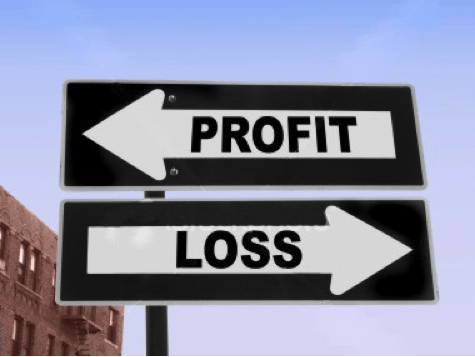The annual checkup in the medical world exists for a reason, and it’s the same reason an annual checkup exists, or at least should exist, in the entrepreneurial world. Annual checkups for freelancers and small business owners are critical to the health of any business, regardless of size. They provide the opportunity to thoroughly evaluate the financial environment and proactively develop a remedy for whatever factors are weakening or strengthening a business.
So, here’s what you need to do as part of your yearly business checkup, and keep in mind that it requires an ongoing monthly commitment to be successful.
Monthly Profit and Loss Statement (P&L)
A monthly or quarterly profit and loss statement, also known as an income statement or revenue statement, is a very important tool. It subtracts the cost of running the business from the revenue, which shows whether the business is or is not generating profit, or net income.
According to Ted Jenkin, co-CEO and founder of oXYGen Financial, Inc., most freelancers do not treat their profession like a business and therefore, disregard the importance of a P&L statement.
Steven Aldrich, CEO of Outright.com agrees. “The most important report for a small business to look at is their profit and loss. In laymen’s terms, this is a report that shows how much money came in and how much money went out. It’s the key metric that will tell them whether they are making it as a business.”
Gail Rosen, CPA, adds that it’s most important to compare the numbers on the P&L to the previous years, which will help shape the direction of the company. She also recommends comparing your numbers to industry numbers to get a better feel for the financial landscape and be able to benchmark your business amidst competitors.
Gross Profit Margin
Gross profit is the difference between revenue and the cost of making a product or providing a service before deducting overheard, payroll, taxes, etc. The gross profit margin is revenue left over after accounting for the costs of goods sold. To determine gross margin, divide revenue by the costs of goods sold.
Though this is something you should be managing on a continuous basis, Xavier Epps, financial adviser and owner of XNE Financial Advising, LLC, recommends understanding how the gross margin has trended over the quarters leading up to the end of the year. Once you can understand how margin is trending, you can set realistic goals to improve it.
Yearly Sales Growth
Yearly sales growth is the difference in gross annual revenue between the current and past year(s). Understanding yearly sales growth is important so that you can incorporate sensible sales growth targets throughout the year. To determine this number, subtract the previous year’s gross revenue from the current; divide that number by last year’s sales and multiple by 100 to find percentage growth. Are you positive or negative? How does this percentage compare the prior years?
Income Classification
To classify income, separate your clients into respective industries and understand which industry is bringing in the most revenue. If one particular industry brings in double the amount of revenue than another, focus your efforts on the industry that generates more revenue. Also, understand how much revenue comes in from each client. If a certain client isn’t generating revenue worth your efforts, try negotiating a higher rate or selling them additional projects or services. On the other hand, if all else fails, you might want to re-evaluate whether to keep or cut the business.
Sara Sutton Fell, CEO/founder of FlexJobs said freelancers in particular should evaluate their client rosters to see who they’ve benefited from and how at the end of each year, with regards to the number of projects and/or the total income from each client.
“For top clients with whom they’ve worked the most, or earned the most from, freelancers should consider the ways in which those clients might be able to help spread the word about their business,” said Sutton. “Freelancers should consider where their leads are coming from. If using websites to search for freelance opportunities, which have been the most productive? Once they have a good idea of where most of their business is coming from, freelancers can concentrate on those outlets in the coming year.”
Monthly Revenue
With a monthly P&L, you’ll be able to understand what your net income is each month. During the start of a new year, you can review the last year’s statement and realize which months provide the most income for your business. This will help you plan an appropriate course of action for the coming year. For example, if June and July prove to be slower months for you, you might consider increasing your marketing budget for these months and decreasing it another month.
Average Monthly Revenue
To find your average monthly revenue, divide your net income by 12 months. By knowing this number, you’ll be able to use it as a benchmark for the upcoming year. If your average monthly revenue is $8,000 and for the past two months, you’ve had numbers around $6,500, you’ll know to plan accordingly to get this number back on track.
Solvency Level
Understanding a business’s solvency level helps the owner know how many months they could survive if sales fell dramatically, according to Epps. To determine the solvency level of your business, Epps recommends taking the amount of funds in the business’s bank account and dividing that by the business’s average monthly expenses. How many months could your business sustain itself if a bad situation occurred? Epps also recommends comparing this ratio on a year-by-year basis and determining whether the solvency level is increasing or decreasing.
Summary of Expenses by Category
According to Aldrich, small business owners and freelancers should look at a summary of their expenses by category annually because it can help the business owner understand where their money is going. Ask yourself if any expenses are higher than expected. Determine if any major expenses are reducible. Finally, evaluate how much you’re spending per vendor and try to negotiate rates.
The Bottom Line
Finance for freelancers and small business owners can be tough. No longer are you dependent on a large company depositing a paycheck bi-weekly into your account and accounting for taxes, health insurance, retirement and so on – and that can be an intimidating feeling.
If you can’t afford or it doesn’t make sense to hire a professional at this point in your venture, consider using a software package. There are many free options as well as higher-cost options. Using software can help reduce overhead and boost revenue by freeing up more time to focus on generating money.
Regardless of what you choose to use, make sure that you’re keeping track of your finances on a monthly basis and make sure that once a year, you give your business its annual health checkup.
Now to You
How do you measure success or areas of improvement? What tools have helped you keep track of your key metrics and finances?






